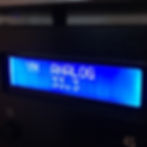Why do my Opus turntables sound different and better, even compared to some of the finest available in the market? Other than my passionate belief that I want to make turntable as “an art that sounds,” with design uniqueness and superiority of artistic finesse, there are several key differentiation points that make my turntables sound like what you hear.
1. ENCLOSURE-LESS DESIGN allows unwanted and unnecessary resonances, which is usually called “euphonic coloration” and/or “warmth”, totally out from the music signal chain. Sound reproduction is primarily affecting the air movement in the listening environment, and I try to make the frame “skeleton” shape and/or make turntable and tonearm portions “silo,” so that the surrounding air is freely moving around the turntable components. The result is of more open and transparent sound atmosphere.
2. PROPRIETARY SPINDLE MECHANISM, using a pair of high quality bearings inside the bearing cup. Conventional turntable spindle operation concepts are to first achieve tight margin between housing and axis for stability and rigidness, to use a single ball bearing on the end of the axis, then to minimize friction by using various lubricants. My mechanism is to use ball bearings instead inside the housing to keep the platter shaft more tight and move more freely. It is a proprietary solution that was originally developed by a Hong Kong engineer friend, and I bought the right to use on my Opus turntables.
3. DC MOTOR DRIVE. Turntables mostly use AC motors (electricity frequency drives the speed) over DC motors (voltage drives the speed). I chose DC motors for my main turntable drive system. It is costly and difficult to execute on many applications, but sounds superior, especially in terms of pitch stability, which ultimately results in extracting more details from the record, hence making music more dynamically contrasted, ultimately making music much, much more fun to listen.
4. MAKING OWN CARTRIDGES AND PHONO AMPLIFIERS. The cartridges (needle), so called audiophile quality and grade, cost around 3000$ at the least, some even 10K$ range and more. I make the choice of cartridges within the scope of Denon (Japan), Ortofon (Denmark), and EMT (Germany), all "proven" fidelity with the history of more than 60+ years, used primary on broadcasting, and more importantly, economically sane and justifiable. I modify those cartridges upon users’ needs (I have modification and repair specialist in Korea to work with) and provide along with phono amplifiers, which is also custom designed by me and built by a famous audio producer in Korea, KTS. The phono amplifier, simply named as "the Phono," is of tube amplification with the flexibility of the user to be able to change the turnover (low frequency) and roll offs (high frequency) points, flexibly adapting to various individual needs, with regards to the matching audio system, listening room environment, and record characters.
5. VENDOR CRAFTMANSHIP. I work with a company Yougn Jin Precision & 3D, a father/son family business, who worked in this industry (manufacturing and processing metal, acryl, plastic, rubber products) since 1969. The quality is impeccable, claimed to be the best available in the world, as well as in Korea. They offer the service all the way from CAD work initial design, conceptual modeling, raw material sourcing, product testing, production, all the way to the final finishes, including surface treatment, anodizing, coating, labeling and packaging.
6. Last but not least, ALL TURNTABLES ARE PERSONALLY HAND ASSEMBLED, TESTED, TUNED, AND INSTALLED BY YOUNG HO HUR, THE CHIEF DESIGNER.
